[PConline evaluation] It's not poetry and distance that really touches people, but surprises that always look forward to, but also blindfolded your eyes. When the Samsung Galaxy S8/S8+ arrives, it's almost as exciting as a child. Samsung almost integrated the cutting-edge technology of the entire industry chain, once again rewrite the Android jungle law. Finally, the hero of the world overlaid the cloud of seven colors and told you that the future has arrived.

Samsung Galaxy S8 Reference Price: Loading... Image Reviews Quote Parameters Overview
Get started video
Configuration parameters
With a 10nm process processor, 2K+ rounded hyperboloid screen, IP68 dustproof and waterproof capabilities, Samsung Galaxy S8/S8+ easily acclaim Android emperor. The international version uses the Exynos 8895 platform and joins Gigabit LTE as the Snapdragon 835.
In addition, Samsung Galaxy S8/S8+ does not follow the dual camera, still provides the best single-camera solution in the industry. Front and rear are equipped with F / 1.7 large aperture, and the front lens upgrade to 8 million pixels; rear camera is 12 million pixels, supports full-pixel dual-core focus (Dual Pixel), OIS optical image stabilization.
Appearance design: it may be necessary to redefine "high screen ratio"
If the first evolution of the appearance of mobile phones is to replace the physical keyboard with the screen, then Samsung will create a futuristic form with a sci-fi feel, allowing the screen to soak up the entire front and frame. Looking ahead, only the screen.
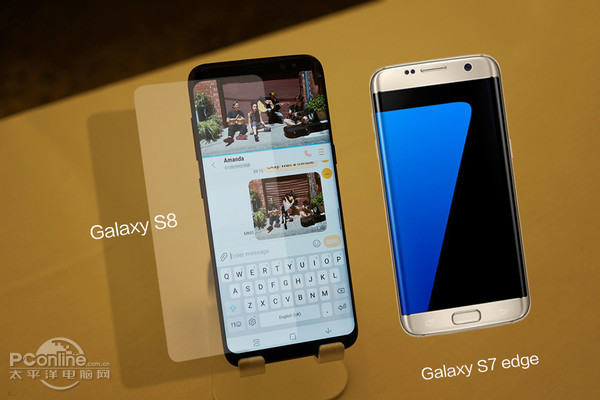
The Samsung Galaxy S8 series is designed with a double curved surface. The S8 is 5.8 inches and the S8+ is 6.2 inches. The resolution is 2960 x 1440. Samsung not only curls the screen on the left and right sides, but also has rounded corners with rounded corners.

The flexible screen almost eliminates the left and right borders, and the space between the upper and lower ends of the mobile phone is also structurally optimized, even increasing the screen share to 84%. The Samsung Galaxy S8/S8+ does not sacrifice functionality in exchange for aesthetics, and is visually extremely balanced.
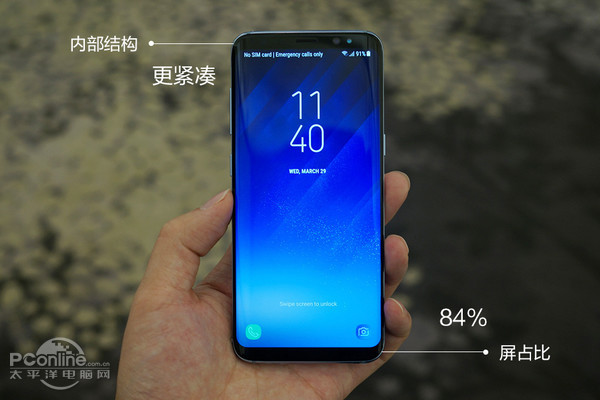
The question is, will 5.8 inches and 6.2 inches be too big? actually not. We usually measure the screen size by diagonal length. Only when the aspect ratio is the same, the screen size is positively correlated with the viewable area.
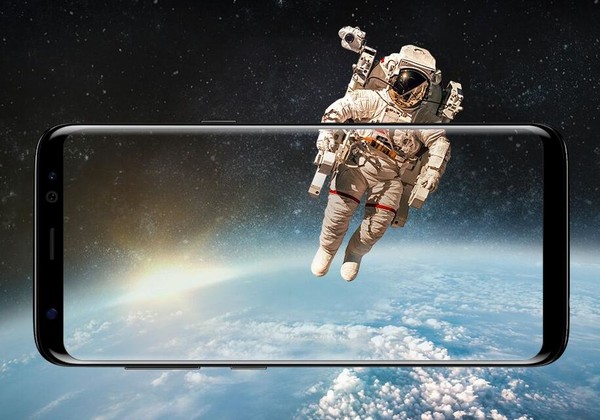
The Samsung Galaxy S8's screen ratio is 18.5:9, plus curvature on both sides of the arc, which is much longer and narrower than traditional 16:9 panels. Even the "6.2-inch" Samsung Galaxy S8+ has a much smaller body width than the "5.5-inch" Apple iPhone 7 Plus.

The top components have an unprecedented level of integration. The Samsung Galaxy S8/S8+ not only retains traditional light distance sensors, earpieces, and front lenses, but also incorporates an iris recognition module. Under the black panel, the hole is hidden. Fortunately, there will not be too much interference.
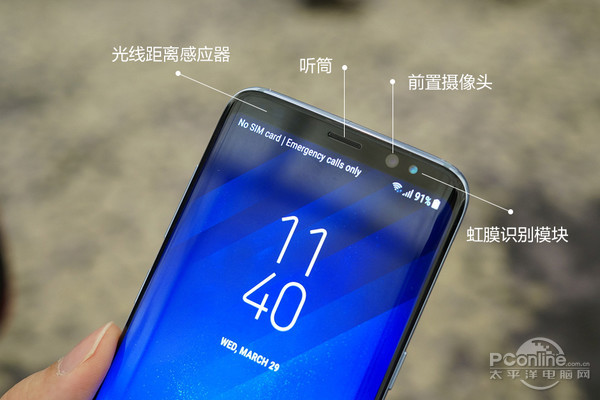
The physical Home button and touch buttons have been removed at the bottom of the screen. The width is almost the same as the forehead, creating a sense of balance. Samsung uses virtual keys, iris recognition, and post-fingerprint recognition to complement the original functionality.
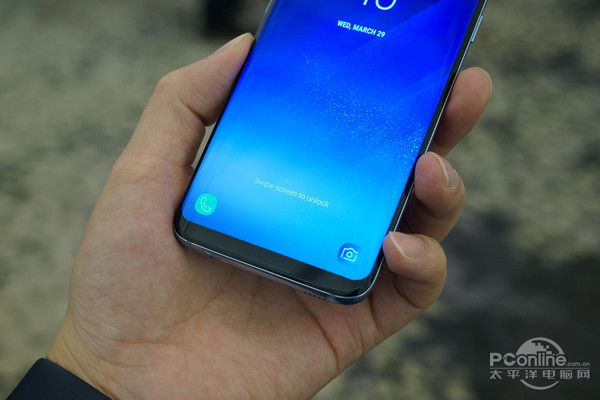
The Samsung Galaxy S8 series is sold in the global market and needs to be compatible with various operators' networks. Higher wireless connection performance imposes stringent requirements on antenna design. With the advent of the 5G era, the return of metal bodies to glass has become a trend.

After the baptism of several generations of products such as the Samsung Galaxy S6, S7, Samsung's use of glass can be described as a culmination. The Samsung Galaxy S8 series offers a total of silver, black, blue, purple and gold colors, a lot of light and introverted, seemingly low-key calm.
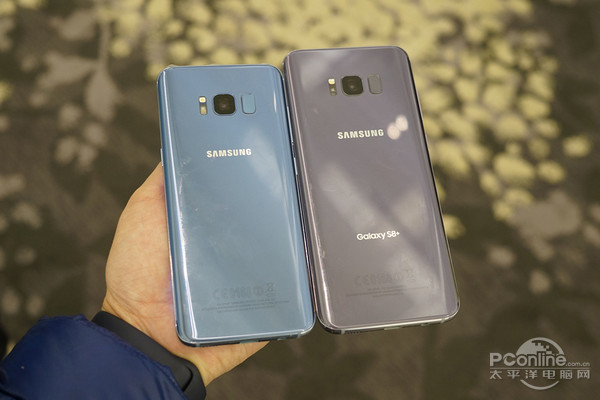
The fingerprint recognition module moved to the back, and we guessed that this is only a temporary transition plan. In the future, Samsung may adopt an in-screen fingerprinting scheme. The body thickness of the Samsung Galaxy S8/S8+ has slightly increased, but the high-profile camera on the back was almost beaten.
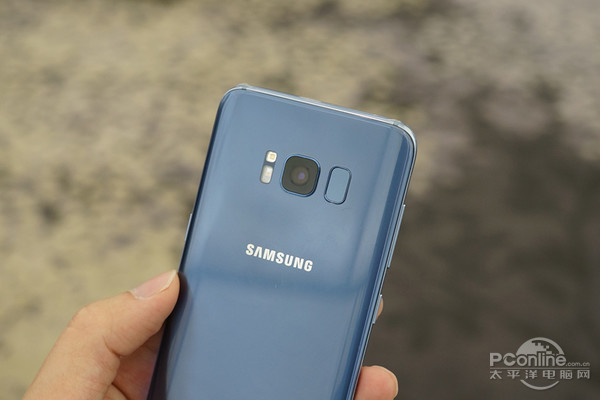
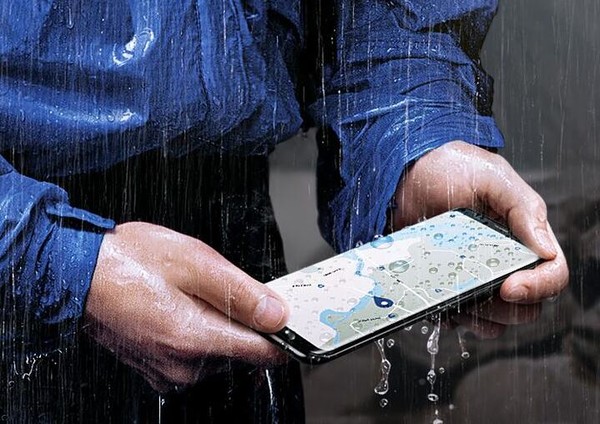
The hyperboloid glass fits the palm, and the metal middle frame enhances the strength of the fuselage. This may be the best design solution for curved screen mobile phones. It is worth mentioning that the Samsung Galaxy S8/S8+ also continues to IP68 dustproof and waterproof capacity, which is considered as both internal and external.
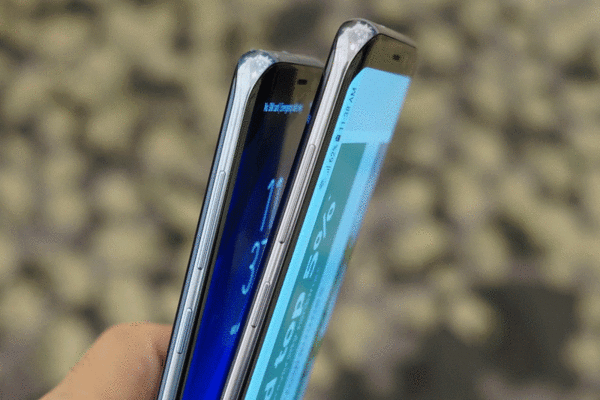
The flexible screen is the technical driving force of the ID design and turns the concept product into a reality. The Samsung Galaxy S8/S8+ can clearly perceive that Samsung really mentions industrial design as a high priority. We believe that this is just a beginning.
System features: Bixby artificial intelligence assistant is not chicken ribs, mobile phone seconds change computer
The Samsung Galaxy S8/S8+ is based on the Android 7.0 system. Based on the 18.5:9 rounded rectangle screen, the interface UI has been redesigned to add virtual keys. The system has become younger, simpler and not simple, adding a lot of fashion.

The system interface uses a large area of ​​white background and is less likely to be depressing than a dark background. The interaction level is further flattened, visually lighter, and defines different functional intervals in colorful and lively colors.


In fact, the rounded rectangle screen does not affect the normal display of the content, but gives a special sense of refinement. The 18.5:9 screen can display more content in the vertical direction when displaying streaming information such as web pages and Weibo.
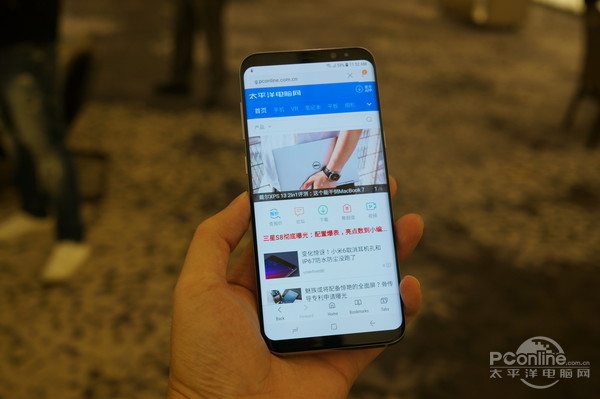
In addition to browsing information and watching videos, this screen has many fresh experiences. For example, in the card-type multitasking interface, the bottom one-click clear button is not squeezed in the thumbnails.

"Instead of stumped designers, let people learn how to interact with the machine, let the machine learn and adapt to our world." In order to truly make smart devices smart, Samsung penetrated deep learning into solutions for user interface design. The Samsung Galaxy S8/S8+ introduces the Bixby mobile interactive mode, and has a separate button on the left side of the body for easy startup at any time.

Samsung has high hopes that Bixby will change the human-computer interaction mode and use voice instead of all touch operations. Scene awareness is everywhere and Bixby will not interrupt ongoing tasks when it is awakened. What is even more amazing is that BIxby has a strong cognitive ability. Even if the user's voice commands are incomplete, they can do their best according to their own understanding.

The specific functions of the Bixby artificial intelligence assistant are mainly divided into four aspects: voice, intelligent search, smart reminder and smart home. In terms of voice, you can use Bixby to operate all the features in your phone, such as setting the phone language through Bixby, or sending pictures to others via Bixby. In addition, Bixby has learning functions and it will continue to evolve.
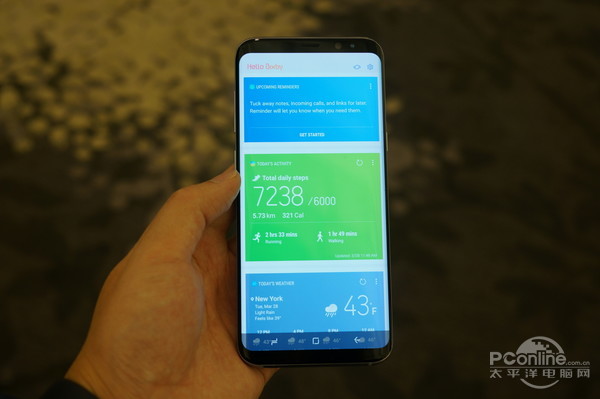
In addition to its speech recognition capabilities, Bixby also has a “viewing†function. Bixby can quickly identify the objects in the picture you are taking, and it also has the ability to help you find links to purchase related products. In addition, Bixby can recognize the text in the picture and even help you complete the translation.

In addition, the link between Bixby and other products has been further improved. In addition to watches, Samsung Connect can also easily control home appliances such as air conditioners and washing machines.
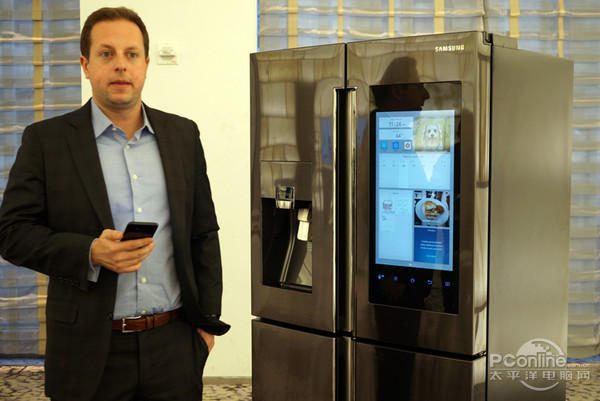
It is worth noting that the Samsung Galaxy S8/S8+ brings a wealth of smart peripheral accessories in addition to the mobile phone itself. With the continuous enrichment of mobile phone usage scenes, for example, we usually use mobile phones to read emails and even send emails. As a result, more and more manufacturers are concerned about the performance of mobile phones.
Samsung's conference will bring a Samsung DeX that will allow the Samsung Galaxy S8/S8+ to become a computer.
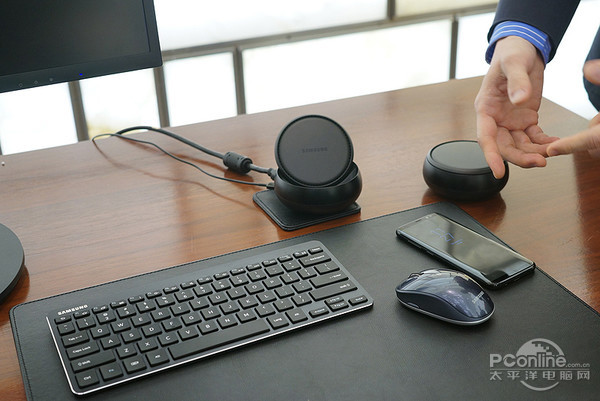
The Samsung DeX can be understood as a docking station. After the Samsung Galaxy S8/S8+ is connected to the monitor, it can experience a computer-like desktop-class system.
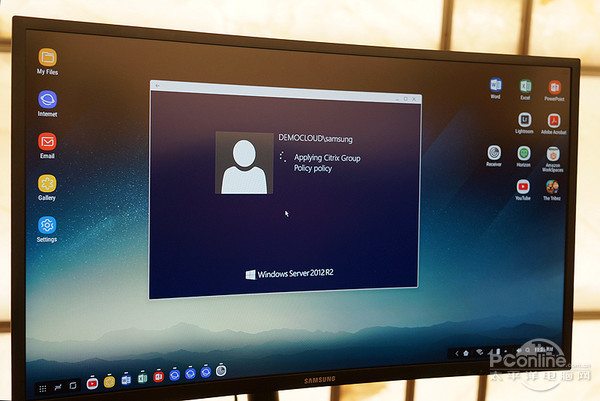
After the expansion of Samsung DeX, we can not only use the original App of mobile phones, but also use Photoshop and Microsoft office software, which can improve the efficiency of our light office.
What's more cool is that the Samsung Galaxy S8/S8+ has a software named "Receiver" that can directly control the computer at home and enable remote operation. After connecting, the phone display is the Windows desktop, which means that we can put the home computer into the pocket.

The design of the Samsung DeX is also more interesting than the design of the "Slide". After sliding, it looks like a mobile phone holder. In addition, in addition to the HDMI interface, Samsung DeX also provides a network cable interface and two USB interfaces.
Camera section: single camera with dual camera
On the Samsung Galaxy S7/S7 edge, for the first time, a full-pixel dual-core focusing technology (Dual Pixel) is used in mobile phones, and the success rate of capturing is even higher. This Samsung Galaxy S8/S8+ also continues the advantages of its predecessor models, using a full-pixel dual-core focusing camera, 12 million pixels, aperture F1.7, although the same pixels as the previous S7/S7 edge, but the sensor is upgraded by IMX260 For IMX333, with 1.4μm large pixels, support optical image stabilization, and camera software has also been upgraded above. Front camera, the pixel is 8 million (IMX320 sensor), aperture F1.7, it is worth mentioning that the front camera also supports auto focus.

Dual Pixel's Chinese name for the full-pixel dual-core sensor technology, was first applied to the Canon SLR 70D above, can improve the imaging focus and tracking focus speed.

Dual-core full pixel can be simply understood as a photodiode
Full-pixel dual-core refers to dividing all pixels in the CMOS into two (dual-core), and two pixels can be independently imaged. Then the computer can calculate the subject and us by comparing the difference between two independent images. The actual distance to achieve fast focusing and tracking focus.
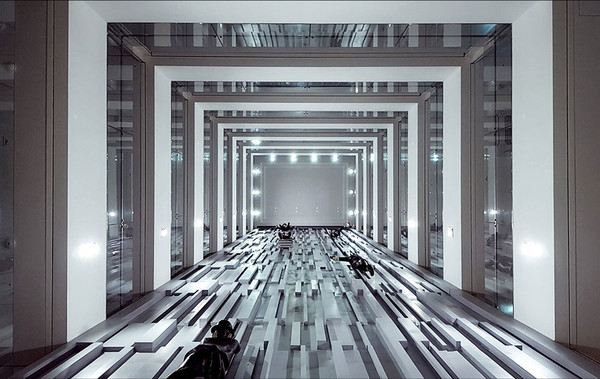



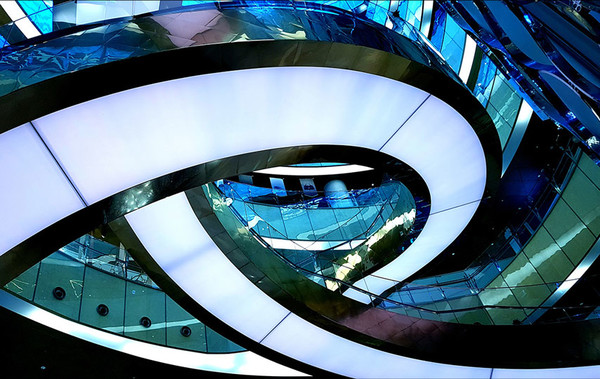
As you can see from the proofs, the Samsung Galaxy S8/S8+ is still powerful on the camera, especially the night shooting capability is very outstanding, but although they still use a single camera design, but with "selective focus" function, you can get similar to the current The dual camera model has a very popular portrait shooting function.
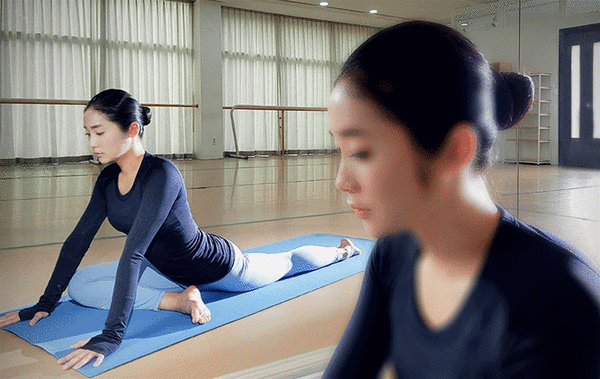
The above is a selective focus comparison chart. From the perspective above, the blur effect is quite natural, and I believe sisters will like it better.
Hardware: The 10nm Samsung 8895 is more powerful and lasts longer
In the international version, the Samsung Galaxy S8/S8+'s first-ever Exynos 8895 processor became another highlight of the device. It is based on Samsung's 10nm LPE process, achieving a 27% increase in performance and a 40% reduction in power consumption compared to 14nm LPE. Smoother operation and improved endurance.
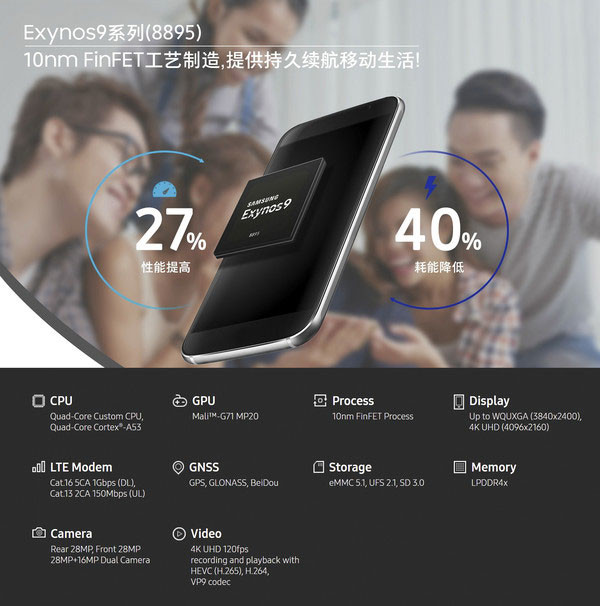
The CPU also uses an eight-core architecture and is equipped with four custom second-generation performance cores (second-generation feline cocoon) and four Cortex-A53 efficiency cores. The GPU is a 20-core Mali-G71. With a 16nm FinFET process, the Mali-G71 can achieve a clock speed of 850MHz, and its performance is 60% higher than that of the Exynos 8890 (Mali-T880 MP12).
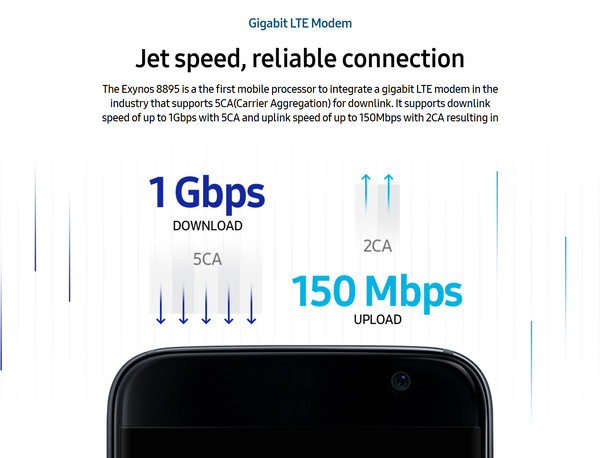
Above the network, Samsung Exynos 8895 supports uplink support 2 carrier aggregation (2CA), the highest rate of 150Mbps, the downlink supports 5 carrier aggregation (5CA), the highest rate of 1Gbps. On the other hand, Exynos 8895 also supports licensed spectrum assisted access technologies such as FD-MIMO and LBT.
end
Samsung's control over screens, memory, and processor core resources is like a domination of "I am a giant" compared to its competitors who rely heavily on the upstream supply chain. After breaking the ceiling, breaking through is "breaking through the boundaries of science and technology."

Samsung Galaxy S8 Reference Price: Loading... Image Reviews Quote Parameters Overview
Today, the Samsung Galaxy S8/S8+ interprets technological products in an entirely new guise. There is no end to it, and innovation alone is the driving force behind the future. Samsung is no longer limited to a single point of hardware breakthrough, it will reach out to artificial intelligence assistants and productivity scenes.
Stepping on the clouds, new emperors have arrived.
Recorder speaker:
Recorder speaker is a kind of micro speaker unit which uses a diaphragm made of Mylar material. Mylar speakers are of ultrathin design and lightweight and clear voice. It is widely used in education industry (storyteller, voice E-book, repeater, reading pen-).
There are two types of Mylar speakers from the shapes:
1) Round shapes, we have products from 10mm to 57mm in diameter.
2) Oblong shape, we have products in sizes of 1510/1712/1813-..

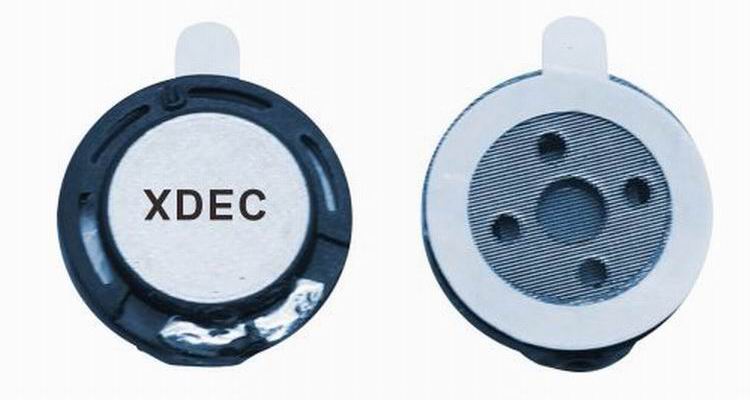
FAQ
Q1. What is the MOQ?
XDEC: 2000pcs for one model.
Q2. What is the delivery lead time?
XDEC: 15 days for normal orders, 10 days for urgent orders.
Q3. What are the payment methods?
XDEC: T/T, PayPal, Western Union, Money Gram.
Q4. Can you offer samples for testing?
XDEC: Yes, we offer free samples.
Q5. How soon can you send samples?
XDEC: We can send samples in 3-5 days.
Recorder Speaker,Car Recorder Speaker,Recording Pen Speaker,Dvr Speaker
Shenzhen Xuanda Electronics Co., Ltd. , https://www.xdecspeaker.com